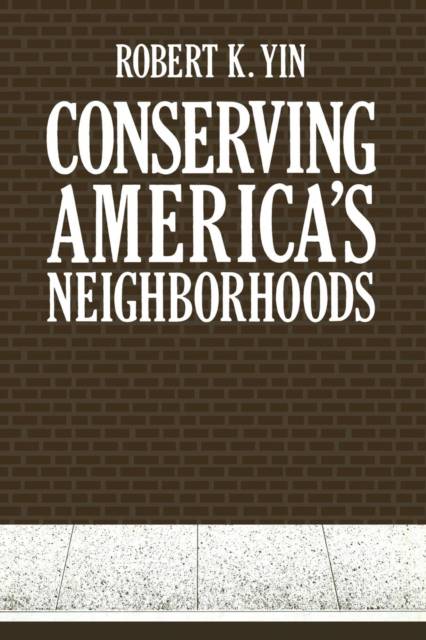
- Afhalen na 1 uur in een winkel met voorraad
- Gratis thuislevering in België vanaf € 30
- Ruim aanbod met 7 miljoen producten
- Afhalen na 1 uur in een winkel met voorraad
- Gratis thuislevering in België vanaf € 30
- Ruim aanbod met 7 miljoen producten
Zoeken
Omschrijving
Over the years I have conducted numerous neighborhood studies, alternately focusing on specific geographic areas, public programs, and types of citizen actions. Because most of these efforts were done on a project-by-project basiS, it did not readily occur to me that these separate investigations also represented an aggregate statement about American neighborhoods: the con- tinuing and complex relationship between public policy and neighborhood life. A suggestion by Lloyd Rodwin, the senior editor for this series, prOvided the opportunity to reexamine the various manuscripts, and to select (and in some cases, conSiderably edit) those bearing most on this overall theme. Thus each of the chapters in this book is a commentary on the potential uses of public policy for preserving the most cherished aspect of contemporary neigh- borhoods-the social life within them. In some cases the policy actions may have only an indirect effect on neighborhoods. For instance, a whole portion of the book is devoted to the role of research in understanding neighborhood conditions; public policy is relevant because research, these days, has itself become a public policy enterprise. In other cases the policy effects are direct and pervasive-the support of citizen organizations, the delivery of neigh- borhood services, and the provision of timely and relevant information to residents. I do not know whether the relationship between public policy and neigh- borhoods is the same or as intimate outside the United States.
Specificaties
Betrokkenen
- Auteur(s):
- Uitgeverij:
Inhoud
- Aantal bladzijden:
- 198
- Taal:
- Engels
- Reeks:
Eigenschappen
- Productcode (EAN):
- 9781468440331
- Verschijningsdatum:
- 26/11/2012
- Uitvoering:
- Paperback
- Formaat:
- Trade paperback (VS)
- Afmetingen:
- 152 mm x 229 mm
- Gewicht:
- 299 g

Alleen bij Standaard Boekhandel
+ 167 punten op je klantenkaart van Standaard Boekhandel
Beoordelingen
We publiceren alleen reviews die voldoen aan de voorwaarden voor reviews. Bekijk onze voorwaarden voor reviews.











